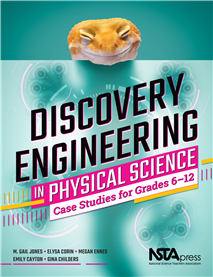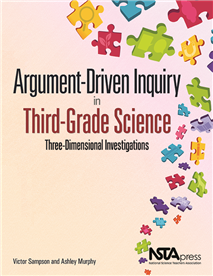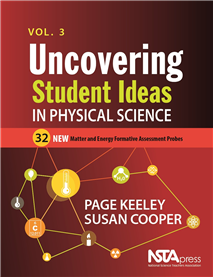All Book Chapters
Book Chapter
This case study provides a summary about the discovery of saccharin. In this lesson, students learn about the accidental discovery and the chemistry behind this innovation. They learn about redox reactions and how to identify the oxidizing and reduc...
Book Chapter
Saving Lives Through an Accident
This case study provides a summary and history on the discovery of glass. In this lesson, students learn about ordinary glass and two types of glass—laminated and tempered—that have unique safety characteristics. After reading about the accidenta...
Book Chapter
This case study provides a summary and history of a study on cholera. In this lesson, students explore how researchers developed a new solution to cholera outbreaks in some regions of the world. After watching women use their sari to filter insects...
Book Chapter
This case study features a summary about the history of the Slinky. In this lesson, students learn about the accidental invention of the slinky which is a coil spring (also called a helical spring). Students review different uses for coil springs a...
Book Chapter
This case study provides a section that describes the discovery of stainless steel. The creation of a new kind of alloy was an accidental discovery that reshaped the world. In this lesson, students will learn about the discovery and analyze microsc...
Book Chapter
This case study provides a summary of the accidental discovery of super glue and explains how the product emerged as one of the most popular glues for many different applications. In this lesson, students explore the history of super glue and the app...
Book Chapter
This case study provides a summary of the accidental discovery of Teflon and explains how Teflon has been transformed into one of the most popular nonstick coatings for commercial use. In this lesson, students explore the accidental discovery of Tefl...
Book Chapter
This case study provides a story about the invention of Vaseline. Petroleum jelly, often sold under the brand Vaseline, is an inexpensive product that has been available to consumers for over a century. In this lesson, students will explore the insu...
Book Chapter
This case study provides a summary of an article on vulcanized rubber. Rubber is one of the most commonly used products in the world today. In this lesson, students explore vulcanized rubber and consider how it was discovered and then work together...
Book Chapter
This case study summarizes the accidental Discovery of X-Rays at the end of the 19th century and shares early reactions to the new, unexpected technology. In this lesson, students explore what x-rays are and how they were discovered. They also lear...
Book Chapter
This case study provides a description of how Velcro was discovered. In this lesson, students explore Velcro and similar products that can be used to keep clothes and other objects fastened together. They consider how Velcro was discovered and work t...
Book Chapter
This lesson is designed to help students figure out what types of objects are attracted to a magnet. Students use what they know about magnetism, properties of matter, and patterns to design and carry out the investigation. They will learn about the ...
Book Chapter
In this lesson, the students’ investigation proposal should include the guiding question, How does changing the distance between two magnets affect magnetic force strength? The goal is to figure out how changing the distance between two magnets (a ...
Book Chapter
In this lesson, the students’ investigation proposal should include the guiding question, Where will the marble be located each time it changes direction in a half-pipe?The investigation gives students an opportunity to figure out how to predict t...
Book Chapter
The guiding question of this investigation is, How do balanced and unbalanced forces acting on an object affect the motion of that object? Students are asked to use what they know about forces, motion, patterns, and cause and effect to design and car...
Book Chapter
The guiding question of this investigation is, How are the life cycles of living things similar and how are they different? The purpose is to give students an opportunity to use the disciplinary core idea growth and development of organisms and the c...
Book Chapter
The guiding question of this investigation is, Why do wolves live in groups? The purpose of the investigation is to use the disciplinary core idea social interactions and group behavior and the crosscutting concept of cause and effect to give studen...
Book Chapter
The guiding question and purpose of this investigation is to figure out, How similar are earthworms to each other? Accomplishing this task, students will need to make observations about and take measurements of the traits of earthworms. The Teacher...
Book Chapter
The guiding question of this investigation is, How similar are offspring to their parents? Students will use what they know about traits and patterns to design and carry out an investigation to determine which traits parents and offspring have in ...
Book Chapter
The guiding question of this investigation is, How do differences in soil quality affect the traits of a plant? Students will use what they know about cause and effect to plan and carry out an investigation to determine how a change in amount of wat...
Book Chapter
The guiding question of this investigation is, What was the ecosystem at Darmstadt like 49 million years ago? Students will use what they know about plants, animals, and the relationship between structure and function in nature to plan and carry out ...
Book Chapter
The guiding question of this investigation is, How does fur color affect the likelihood that a rabbit will survive? Students will use what they know about traits, ecosystems, and cause-and-effect relationships to design and carry out an investigatio...
Book Chapter
The purpose of this investigation is to give students an opportunity to use the disciplinary core idea adaptation and the crosscutting concept of cause and effect to figure out, Why do mammals that live in the Arctic Ocean have a thick layer of blub...
Book Chapter
The guiding question of this investigation is, What weather conditions can we expect here during each season? Students can use information about the daily weather conditions over the last year and what they know about the weather, seasons, and patter...
Book Chapter
The guiding question of this investigation is, How does the climate change as one moves from the equator toward the poles? Students can use what they know about weather, climate, and patterns to determine the climate of at least two different cities...
Book Chapter
What Have You Heard About Climate Change?
The goal of this session is to set the stage for student investigations into the complex topics of global warming and climate change. Students first participate in a networking activity to introduce them to the Climate Change Agents whose interviews ...
Book Chapter
Sources of CO2 in the Atmosphere
In this session, students discover some sources of CO2 in the atmosphere and compare their relative concentrations. The primary objective, in addition to being an interesting lab, is to show students that there is a considerable amount of CO2 in car ...
Book Chapter
The greenhouse effect is critical to understanding the basic mechanism of global warming. This session uses two types of models to help students understand the key concept of the greenhouse effect and the role that CO2 plays. Students then analyze da...
Book Chapter
Fact or Phony? Scientifically Evaluating Data
This session begins by students looking at a purely fictional web page cleverly disguised as factual. Students are challenged to learn important information from the web page to decide if it is factual. The session addresses the need to evaluate accu...
Book Chapter
Conducting Research on Current Climate Change Topics
This session leverages the power of student discovery, viewed through the lens of the Next Generation Science Standards (NGSS), to support students’ awareness of the complex nature of a warming planet. Students begin the session by forming research...
Book Chapter
In this session, students engage in a mock scientific conference to demonstrate another aspect of the work of scientists—sharing work with peers and seeking critical review. The mock conference provides an opportunity for students to present their ...
Book Chapter
This session provides an opportunity for students to integrate the information they have learned from their research. They create charts or mind maps to anticipate the ripple effects from an aspect they have studied. They consider the secondary effec...
Book Chapter
This session is about hope. After students learned a great deal about the serious implications of a warming planet, it is important for them to have reasons to be hopeful and to see solutions that are being implemented and planned for the sustainabil...
Book Chapter
This session brings together all that students have learned to provide them with concrete actions they can take to make a difference in their own lives and communities. The session begins with students calculating their own carbon footprint and compa...
Book Chapter
The purpose of this assessment probe is to elicit students’ ideas about the concept of matter. It is designed to understand how students define matter and whether they recognize that all living, once-living, and nonliving things, materials, or subs...
Book Chapter
The purpose of this assessment probe is to elicit students’ ideas about the concept of matter. It is designed to find out how students define matter and whether they recognize that all three states—solids, liquids, and gases—are matter. It is b...
Book Chapter
What Do You Know About Atoms and Molecules?
The purpose of this assessment probe is to elicit students’ ideas about atoms and molecules. It is designed to reveal commonly held ideas students have about the structure and properties and provides students an opportunity to use the scientific p...
Book Chapter
The purpose of this assessment probe is to elicit students’ ideas about the size (in diameter) of atoms. It is designed to reveal how students use the crosscutting concept of scale to compare relative sizes by estimating size in general and using o...
Book Chapter
The purpose of this assessment probe is to elicit students’ ideas about the particle model of matter. The probe is designed to find out if students recognize that air is made up of particles that are widely spaced with empty space between the parti...
Book Chapter
What If You Could Remove All the Atoms?
The purpose of this assessment probe is to elicit students’ ideas about the particle model of matter. The probe is designed to find out if students recognize that there is empty space between the atoms that make up an object and that the atoms are ...






